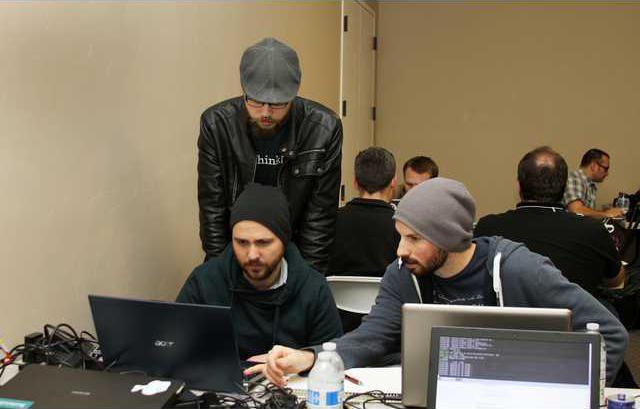The nearby Bay Area may be the global epicenter of technological innovation, but the Central Valley is host to its own scene where tech-savvy individuals are gathering to not only work but play too, like at the first ever Valley Hackathon.
On Friday roughly 40 programmers gathered in downtown Turlock for the Hackathon where the task was to build the best software project possible in 24 hours. Equipped with energy drinks and snacks, six of the eight teams finished the competition with ideas that could revolutionize basic daily functions.
“It ran the gamut of a lot of different things and that’s the idea of a Hackathon,” explained Senior Project Manager Ben Hector of Geostrategies, a strategy development and market intelligence firm.
The Hackathon was precipitated by Geostrategies’ interest in hiring an individual for software development. Having trouble finding qualified candidates in the Central Valley but confident they existed, the company set out to host the Hackathon with the hopes of drawing on the subtle technology community in the area.
“We realize sometimes we get overshadowed by our Bay Area neighbor, but knew there must be some tech people here,” explained Hector.
Similar to many technology industry individuals use of MeetUp.com to find fellow techies, the Hackathon brought forth not only great ideas but served as a networking event for the participants as well. According to Josh Chamberlain of Geostrategies the Hackathon was meant to be the first step in fostering the programming community in the Valley, with a long-term goal of making Turlock a center of tech and innovation.
While the 24 hour event proved a test of the participants’ programming abilities under pressure, there was also a bigger challenge: staying awake.
“24 hours is not much time, especially when you’ve been up for 24 hours,” said Hector.
The majority of contestants fought the urge to sleep and stayed overnight to complete their projects, including the winning group who walked away with a $1,000 prize.
“I got about two and a half hours sleep total,” said James Moore of the winning group.
Moore and his team members created SendSmart, an email marketing tool that allows email senders, such as small business owners sending a newsletter, to tag links within the email. When recipients click on the links their browsers information is sent to the software in turn allowing the sender to track the recipients’ interests.
“With the internet everything seems to change all of the time, it’s constantly moving, but one of the things we noticed that has been there since the beginning and is still true today is email,” said Moore. “It may not be cool or sexy, but it’s something everyone does. Everyone checks their email.”
With SendSmart the sender can learn more about the recipient, or a subscriber, and in turn find out what they are more inclined to click on when browsing the web.
“You can learn about customers based on their behavior and can market to their specific interests,” said Moore.
Each project was evaluated by a panel of four judges including Geostrategies President and CEO Carl Schroeder, Vice President of Product Development for Front Porch internet service providers Scott Smith, Technical Instructor at Twitter Simeon Franklin, and Head of Digital Marketing Management and Strategy for E&J Gallo Winery Phillip Lan.
Other applications included one that creates music based on a person’s movement by tracking their basic spinal positioning; one to help with training that allows administrators to upload videos and create questionnaires with wrong answers requiring employees to re-watch the video; one that allows users to click on a United States map to see their state representatives with the aim of submitting comments or complaints that can be consolidated and sent to the representative’s office; one to track websites a user viewed to give the user a warning if the site was blacklisted in certain regions; and one to help track gifts that allows the user to take a photo of the gift, upload it and record who gave it so as to remember when it comes time to write thank you cards.









